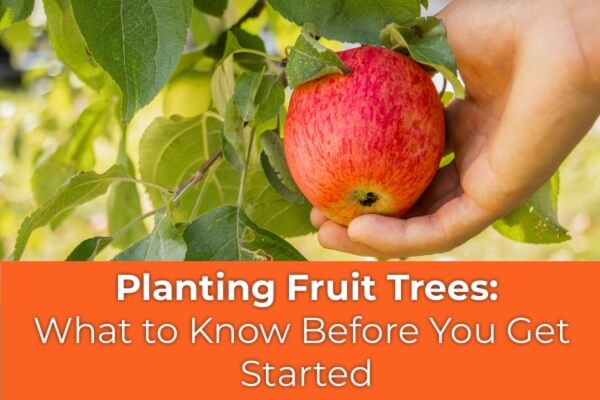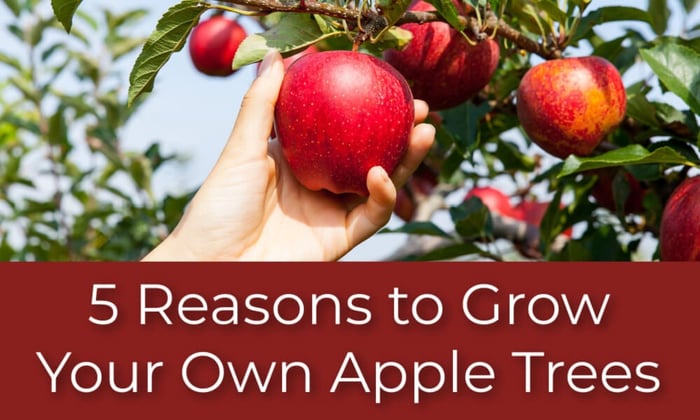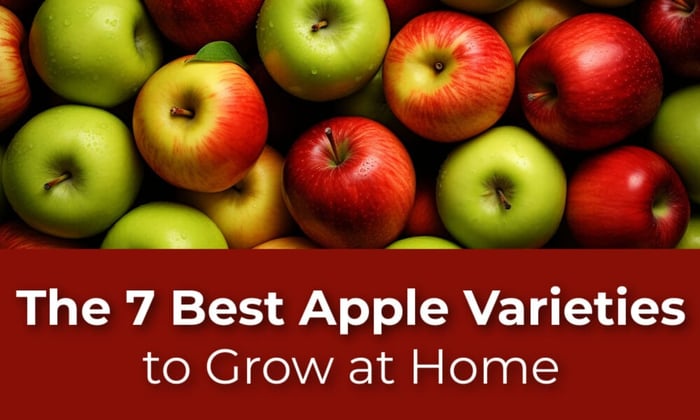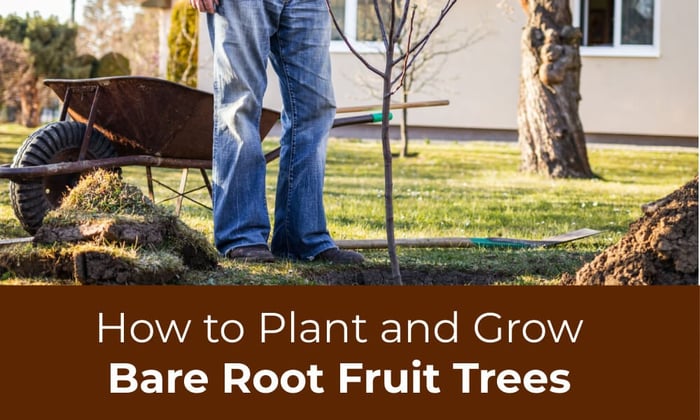Table of Contents
Planting Fruit Trees: What to Know Before You Get Started
For many gardeners, harvesting your own fruit straight from the tree is the ultimate gardening goal. It feels like there is nothing more rewarding than picking your own plum or juicy peach. But before you dig in and bring home a new bare root fruit tree this winter, there are a few important things to think about. Consider these factors when it comes to planting fruit trees.
Deciduous fruit trees like apple, pear, cherry, peach, and plum are an investment in both time and money. They take time to establish and years to fully mature, so setting yourself up for success makes a big difference in your growing experience. Here are some key points to consider:
1. Know Your Growing Zone
One of the first things to consider when you are planting fruit trees is your USDA hardiness zone. Deciduous fruit trees have varying cold tolerances depending on the variety, and selecting the right one for your area is crucial. For example, apples thrive in cooler regions and can handle frost better than other fruits, such as cherries. Peaches and nectarines prefer warmer climates and can struggle in areas with late spring frosts. Cherries have varieties for both cool and warm regions, but can be finicky about temperature swings.
2. Chill Hours
The term "chill hours" is a common one that you hear when shopping for deciduous fruit trees. Chill hours are the cumulative number of hours that your tree needs between 32°F and 45°F to break dormancy and produce flowers, and ultimately, fruit. Low chill varieties (150-300 hours) are great for warmer regions, such as coastal California or the southern US states. High chill varieties (800+ hours) are best for cool climates and long, cold winters.
If you plant a high chill apple in a low chill area, it may leaf out but never fully flower properly. On the other hand, a low chill variety in a high chill area may leaf out (break dormancy) too soon and lose its blooms to frost. This is why it is important to match your chill requirements to your climate.
3. Pollination Partners
Pollination is another consideration when planting fruit trees. Some deciduous fruit trees are self-fruitful, meaning they do not need another variety for cross-pollination and can produce fruit on their own. Others need a partner of a different variety for cross-pollination. Self-fruitful examples are most peaches and nectarines. Many apples and pears, however, require a pollinator.
4. Where to Plant
Plant your tree in an area that receives full sun daily. That is a minimum of six to eight hours. Sunlight helps to ripen the fruits and supports healthy growth.
In addition to being sunny, the spot you choose should have good soil drainage. Consistently soggy or overly wet soil can negatively affect the roots, and even cause them to rot and die. If your yard has heavy clay soil, amending it or creating a raised mound of appropriate soil are two good options. You can grow your deciduous tree in a container for the first year or two after receiving it, but planting it in the ground will achieve the best results.
When you are deciding how far apart to plant your fruit trees, consider their mature size. Standard fruit trees can grow 15-25 feet tall with an equal canopy width. Dwarf or semi-dwarf varieties will stay smaller. Be sure to plant your trees far enough apart that they have room to spread out. Regular pruning will help keep their size properly maintained.
5. Soil Preparation and Fertilizer
Before planting fruit trees, make sure that your soil is ready to accept your tree. Deciduous fruit trees require well-draining soil with nutrient-rich organic matter. You can use a mix of compost and native soil
6. Watering and Regular Maintenance
Young, newly planted fruit trees need consistent watering to establish their root structure. Deep watering once a week is more beneficial than shallow, frequent waterings. Deep watering will encourage the roots to grow deeper into the ground. During the flowering and fruiting season, regular, deep waterings are the key to keeping fruit on the tree.
Seasonal maintenance, such as pruning in the winter, thinning fruit in the spring, protecting against pests and animals, harvesting ripe fruit, and pruning again in the late summer, are all chores that should be carried out yearly to give your tree the best chance of success. Be sure to have the right tools for these jobs, such as a gopher basket or deer fence when planting, pruners, and perhaps even a small saw.
When pruning your fruit tree, remove weak branches, branches growing inwards or downwards, and keep an open shape to allow for sunlight and airflow. Thinning your fruit so that there is space between each one will help prevent branches from breaking. The remaining fruit will also grow larger and more flavorful.
7. Patience and Expectations
Planting fruit trees and growing your own fruit is the ultimate lesson in patience. Most deciduous fruit trees can take up to five years before they produce a significant harvest. Peaches, plums, and nectarines produce sooner than apples and pears, which tend to get started slower. But the pay-off is huge. Once established, one fruit tree can produce bushels of fruit, and there is nothing that tastes better than homegrown fruit!
8. Your Dream Orchard is Waiting
Before choosing and bringing home your new bare root fruit trees, take some time to consider your climate and chill hours, where you will plant them, pollination needs, your soil make-up, and the time and energy commitment. A little research beforehand will save you from frustration later down the road and will help ensure that your orchard, no matter the size, thrives and produces for you.
We’ve seen firsthand how the right preparation leads to success. Plant a tree correctly once, and it can reward you year after year.
We offer a wide selection of deciduous fruit trees, along with citrus, olives, and berries for every kind of gardener. And remember that good soil, the right fertilizer, and consistent care are just as important as choosing the right variety.
Planting fruit trees is an investment in your garden, your family, and your future generations. With the right start, you’ll enjoy fresh harvests and the simple joy of eating fruit you grew yourself.
Click here to See ALL FRUIT TREES




